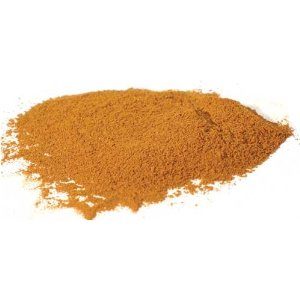Cinnamon is a substance derived from the bark of the cinnamon tree. The species of this tree ranges from 50 to 250 but the two main varieties are Cinnamomum cassia and Cinnamomum zeylanicum.
The C. zeylanicum also known as Ceylon cinnamon is the source of its Latin name and is considered as the true cinnamon. It has a lighter color with a flavor that is sweeter and more sophisticated. The cinnamon tree grows up to 50 feet tall and is native to Ceylon (Sri Lanka), and the best trees grow along its shores near Colombo. But it also grows in India and other tropical countries such as Vietnam, Java and the West Indies.

A Short History Of Cinnamon
The use of cinnamon goes a long way back in history. It was used for flavoring in beverages and as a medicine in ancient Egypt. The ancient Egyptians also used cinnamon together with other spices in embalming their dead. During these times, cinnamon was regarded as more precious than gold. Records showed that Nero spent a whole year’s supply of cinnamon on the funeral pyre of his wife – to express his great loss.
Cinnamon as a spice was so highly prized that Sri Lanka was invaded by the Portuguese, whereby the King of Sri Lanka was forced to pay them 110,000 kilos of cinnamon annually just to maintain peace. In 1636, the Dutch captured Sri Lanka and established a system of cinnamon cultivation which persists up to the present. These days, our present supply of cinnamon in all forms comes from Sri Lanka, India and other tropical countries.
Taste And Color Of Cinnamon
You can get cinnamon in barks rolled into one another, sticks, powder and in liquid (oil) form. The barks are typically thin, with pale to dark brown color. Choose those with parchment-like appearance and pale color since they are of the best qualities. Cinnamon sticks and cinnamon powder are of the same brownish red color while cinnamon oil can go from pale yellow to brown. Cinnamon has a sweet and fragrant odor and its taste is warm and aromatic. It is somewhat peppery but not as hot as pepper, with a hotness scale of only 3.
Why Cinnamon Is Valuable
Cinnamon is highly valued for its taste, sweet scent and medicinal properties. The taste and scent of cinnamon was so highly valued in ancient times that its source was kept secret by its traders in order to monopolize its supply and marketing. These days, cinnamon’s value in the medical field is gaining recognition. It has been recently found by modern research that cinnamon can be an effective treatment for many diseases. The chemical substances contained in cinnamon can be used as anti-bacterial and anti-fungal agents. Its antiseptic properties are valuable for commercial operations like the cosmetic and food industries.
Modern Uses Of Cinnamon
These days, cinnamon is not just used for food flavoring and perfume making but more importantly as a form of treatment for certain diseases. The anti-microbial qualities of cinnamon are so effective that many medical practitioners are already using it to treat a number of diseases. It is used as a natural anti-inflammatory agent because it contains substances that inhibit the release of certain acids in the body that cause inflammation. Cinnamon is also used to help those who are suffering from Type 2 diabetes because it stimulates insulin receptors and inhibits the enzyme that inactivates them. It is also used to treat those with fungal and bacterial infections.
How You Can Benefit From Cinnamon
Cinnamon is a natural substance therefore taking a reasonable amount of it to improve your health will not pose any adverse side effects. Recent studies have shown that an intake of one-half cinnamon every day may help reduce your blood sugar, cholesterol and triglyceride levels to as much as 20%. Chewing a small amount of powdered cinnamon can also help relieve you of coughs and colds. It is even recommended for those who are suffering from indigestion and loss of appetite. These are only some of the benefits you can get from cinnamon. But they are enough to show how valuable this substance is.